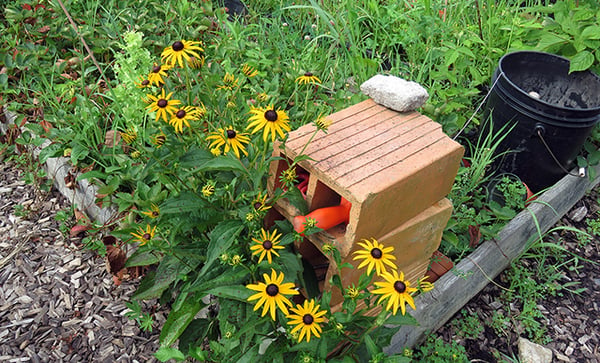Published: July 23, 2020
 Weeds and poison ivy. Insects and annoying critters. Heat and drought. Sometimes gardening can be challenging, but this summer try to embrace the benefits of gardening that are good for the body and soul.
Weeds and poison ivy. Insects and annoying critters. Heat and drought. Sometimes gardening can be challenging, but this summer try to embrace the benefits of gardening that are good for the body and soul.
Gardening takes us outside of our house and our heads. Pulling weeds and watering can be relaxing. Freshly cut flowers and herbs brighten our table and our mood. Our body (instead of our head) aches in a good way. Plants demand regular attention and time so patience and hard work are needed at times.
Gardening Increases in Popularity in 2020
Rutgers University professor Joel Flagler teaches horticultural therapy, a discipline using plants and gardening to improve the mental and physical health of people with special needs. It makes sense that there were a lot of newbie gardeners in 2020, he says.
“There are certain, very stabilizing forces in gardening that can ground us when we are feeling shaky, uncertain, terrified really. It’s these predictable outcomes, predictable rhythms of the garden that are very comforting right now,” he told MarketWatch reporter Andrew Keshner.
Millions of Americans, though, didn’t need a pandemic to appreciate the joys and benefits of gardening. They’ve been gardening for years.
Gardening by the Numbers
According to the 2022 National Gardening Survey, about one-third of respondents planned to spend more on lawn and garden activities in 2023. A report by Bigger Garden shares that gardening is one of the most popular hobbies in the U.S., with 55 percent of households actively gardening.
Community gardens have numerous positive benefits, including increasing surrounding property values, lowering household food security concerns, and improving access to fresh fruits and vegetables. There are nearly 30,000 community gardens in the 100 largest U.S. cities.
Baby boomers report gardening as a leisure pursuit, but are gardening less than they were a few years ago as they downsize their homes and gardening spaces.
Kendal’s Community Garden
The community garden, currently comprised of 34 plots, has been part of Kendal at Oberlin since its first summer in 1994. While many residents cultivate smaller gardens around their cottages, the community garden gives other residents an opportunity to dig deeper.
The small annual fee comes with lots of perks, explains manager Bill Washburn. The 12 x12 plots are fenced in to keep critters at bay, a rototiller along with wheelbarrows, trowels and assorted tools are stored in a nearby shed and water is plentiful.
“We have three outlets for hoses and one for drinking, so the gardens stay hydrated and so does the gardener,” he says.
Many residents grow flowers for their cottage and also to share for flower arrangements in Kendal’s public spaces. Residents like to share surplus vegetables too.
“Earlier this week, I put 10 cucumbers on the front desk, and they disappeared fairly quickly,” Bill says.
The summer demand for plot rentals is traditionally high.
Benefits Go Beyond Fresh Veggies and Flowers
Here are 5 benefits, according to AARP:
- Moderate exposure to sunlight helps older adults achieve adequate serum vitamin D levels (don’t forget sunscreen and sunglasses).
- Physical activity, particularly gardening, could reduce or delay cognitive decline
- Gardening improves moods better than other hobbies
- Gardening is a great aerobic exercise – and you might not even realize you’re “exercising"
- Gardening, especially community gardening, can help ease social isolation and loneliness
It’s not too late to start gardening. The first frost in the midwest typically happens in late October, so you can still plant lettuce, peas, cucumbers and other crops for a fall harvest.
Would you like to learn more about Kendal at Oberlin?
For an introduction to our vibrant life plan community, download our brochure.

In the past, Molly Kavanaugh frequently wrote about Kendal at Oberlin for the Cleveland Plain Dealer, where she was a reporter for 16 years. Now we are happy to have her writing for the Kendal at Oberlin Community.
About Kendal at Oberlin: Kendal is a nonprofit life plan community serving older adults in northeast Ohio. Located about one mile from Oberlin College and Conservatory, and about a 40-minute drive from downtown Cleveland, Kendal offers a vibrant resident-led lifestyle with access to music, art and lifelong learning.




